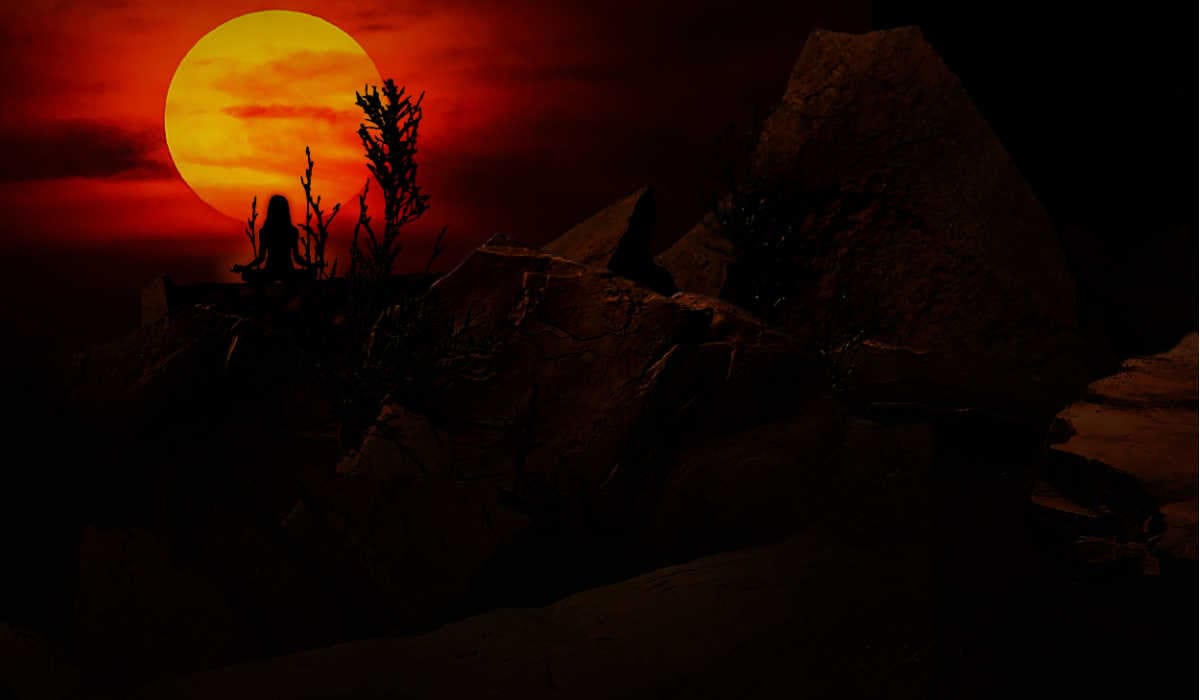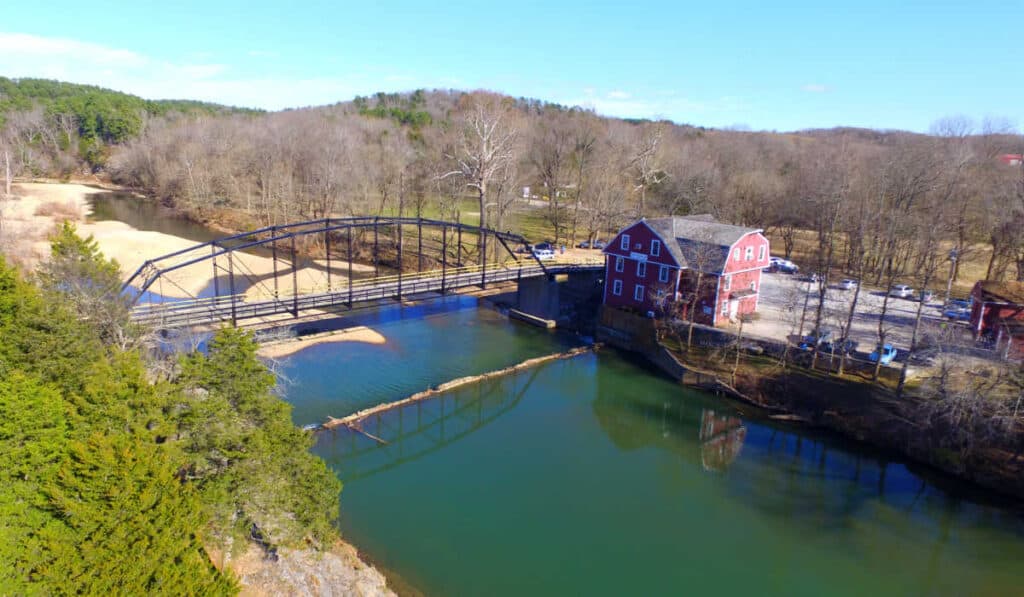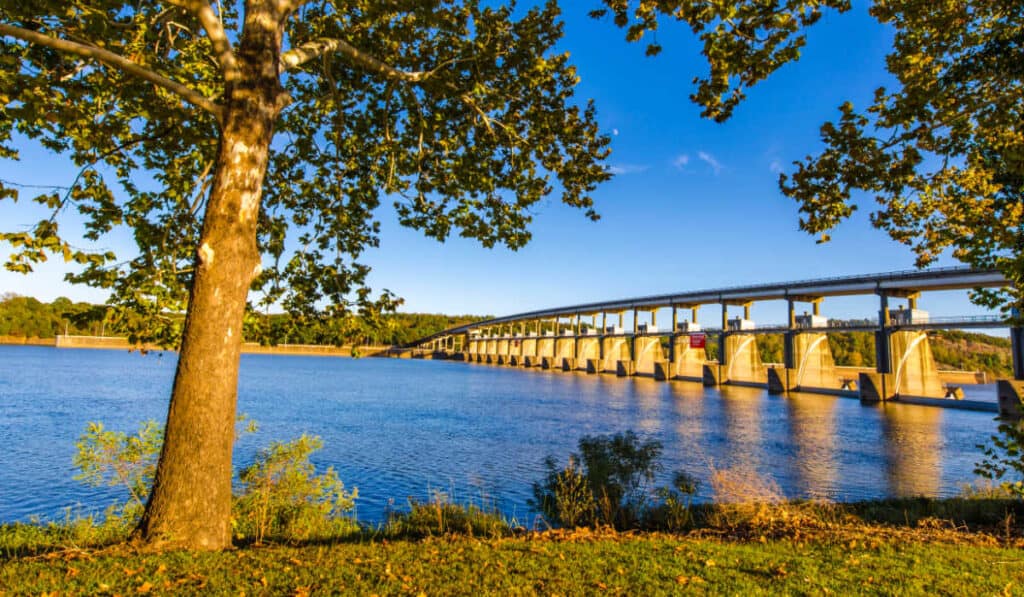The Ozark Mountains, also known as the Ozarks, hold a plethora of legends and tales that have been passed down through generations. As I delve into these stories from the heart of the United States, I cannot help but be captivated by the mysterious and eerie nature of the folklore that has given this region its unique charm and identity.
Exploring the legends of the Ozarks presents a fascinating journey through time, offering glimpses into the lives and beliefs of those who have come before us. Stories such as the Ozark Howler, a large and mysterious creature said to inhabit the wilderness, or the tale of the nearly forgotten Blue Man continue to both intrigue and entertain listeners, keeping these tales alive to this day.
As I continue to uncover these legends, I am reminded of the rich cultural heritage that exists in the Ozark Mountains. From the people who have called this region home, to the strange happenings that defy explanation, the legends of the Ozarks make for a captivating and unforgettable journey.
Geographical Understanding of Ozarks
Location and Topography
I find the Ozarks region fascinating due to its unique geography. Covering parts of Missouri, Arkansas, Oklahoma, and Kansas, the Ozark Mountains offer a blend of beauty and ruggedness. Primarily located in northern Arkansas and southern Missouri, the Ozarks extend into the northeastern portion of Oklahoma. The Ozark Plateau is bordered by the Mississippi River to the east and the Osage River to the west, making it an ecologically diverse region.
The Ozarks are not a traditional mountain range, but rather a highland region, featuring two distinct mountain areas: the Boston Mountains and the St. Francois Mountains. The Boston Mountains, the highest of the Ozark highlands, reach elevations of up to 2,600 feet, while the St. Francois Mountains, located in southeastern Missouri, are of volcanic origin and have peaks reaching over 1,700 feet.
Significant Features
In the Ozarks, one can find a mix of forests, rivers, and lakes that make it a destination for outdoor enthusiasts. A key feature of the region is the Ozark National Scenic Riverways, which offers majestic views of the clear, spring-fed rivers and streams that carved the limestone bluffs of the Ozarks over many years.
The Ouachita Mountains, although not part of the Ozarks, are located to the south of the Ozark Plateau, and they offer a contrast with their east-west orientation and abundant quartz deposits.
An interesting man-made feature within the Ozarks is the Lake of the Ozarks, which was created in the 1930s by damming the Osage River. At 93 miles long and with over 1,150 miles of shoreline, the Lake of the Ozarks is a popular recreational spot, providing opportunities for boating, fishing, and swimming.
As a nature enthusiast, I appreciate the diverse landscapes and rich history that the Ozark Mountains have to offer. The Ozarks is truly a geographically unique and culturally significant American region.
Historical Context of Ozarks
As a writer with a deep interest in the history and legends of the Ozark Mountains, I find it important to understand the historical context of this region. The Ozarks, located primarily in Missouri, Arkansas, and eastern Oklahoma, have a rich history that spans from pre-Civil War times to the present day. I’ll be taking a closer look at some key moments in the history of the Ozarks and how they’ve contributed to the unique culture of the region.
Pre-Civil War
Before the arrival of European settlers, the Ozarks were primarily inhabited by the Osage and other Native American tribes. The region’s rugged terrain and dense forests made it an ideal hunting ground for these tribes. In the 17th century, French explorers became the first Europeans to encounter the Ozarks and its inhabitants. The region eventually became part of the Louisiana Purchase in 1803, which expanded the United States’ territory westward.
The early 19th century saw an influx of settlers to the Ozarks, many of whom were attracted to the area’s abundant natural resources, such as timber and fertile farmland. St. Louis, a major city located at the confluence of the Missouri and Mississippi Rivers, played a crucial role in the westward expansion of the United States. It served as a hub for steamboats, trade, and migration and facilitated the growth of the Ozarks region.
Civil War and Aftermath
The Civil War had a significant impact on the Ozarks, as the region’s loyalties were divided between the Union and the Confederacy. This led to a series of skirmishes and guerilla warfare throughout the Ozarks. Some areas in Illinois, for example, were known to have Confederate sympathizers, and the state’s southern region experienced violence similar to the Ozarks.
The aftermath of the Civil War saw a massive population boom in the Ozarks, as the region’s natural resources attracted both veterans and new settlers alike. This period also witnessed an influx of railroads, which were crucial in connecting the Ozarks to markets in the East. The construction of railroads often led to the establishment of new towns and communities, further developing the Ozarks region.
In the later years, the Ozarks experienced another significant shift with the growth of tourism. The beauty of the region, with its rolling hills, rivers, and forests, attracted visitors from other parts of the country. This helped spur the development of California, another state with stunning natural landscapes. The Ozarks have continued to evolve and change throughout their history, ultimately shaping the region’s unique legends and folklore.
Legends and Folklore
Notable Myths
One of the most famous legends from the Ozark mountains is the Ozark Howler, a mysterious creature that is said to roam the woods. The Ozark Howler is a supposed mix of various wild animals such as large cats and canines, with a unique howl that sends chills down the spines of those who hear it. Many locals have reported hearing unexplainable sounds of this creature echoing through the forest.
Another fascinating character from Ozark folklore is the Blue Man of Spring Creek. This legend tells of a man with blue-hued skin who lived in the mountains, helping lost travelers and protecting the local community. The Blue Man was believed to have special powers and played a significant role in Ozark legends.
Mysterious Tales
The Ozark mountains are also widely known for their vast array of ghost stories. One popular tale revolves around eerie encounters in the woods, where people have reportedly come across apparitions of those who have long passed. These ghost sightings are typically associated with tragic events from the region’s history, leaving an air of mystery and fear surrounding the forest.
While most legends of the Ozarks focus on mythical creatures or ghostly encounters, there are also mysterious tales involving wild animals. For instance, the legend of the Ozark Howler has often been linked to sightings of the elusive cougar, a wild animal once believed to have been hunted to extinction in the area.
As I delve into these legends and folktales of the Ozark mountains, it is fascinating to witness the rich tapestry of stories that have been woven across generations. Such folklore helps us delve into the traditions, beliefs, and history of the Ozark people, ultimately providing us glimpses of who they were and what they experienced within these ancient, mysterious woods.
Cultural Nuances of Ozarks
Survival
In the Ozarks, survival has long been an essential aspect of the region’s culture. I’ve come across stories of early inhabitants who relied on agriculture and hunting to subsist. Livestock played a significant role in the Ozark way of life, with many families raising their own animals for food and farming purposes. Fishing, too, was a common practice, providing both sustenance and a sense of connection with the region’s abundant rivers and streams. Having a strong connection to the land has always been at the heart of Ozark-based culture, and this is evident in the traditional ways of living that many people still practice today.
Arts
Cultural expression in the Ozarks is deeply rooted in the landscape and the experiences of those who have made this region their home. I find the arts and folklore of these mountains to be an intriguing blend of mystery, tradition, and creativity – a reflection of the people’s connection to the land and their own unique experiences. Throughout history, the Ozarks have produced folktales and legends, some of which cannot be easily explained, as suggested by Ozarks Alive. In addition to storytelling, music has played an important role in the evolution of Ozark art; some of the most resounding tunes stem from the oral traditions of the region’s earliest inhabitants.
The Ozark region is also well-known for its distinctive crafts, which showcase the workmanship and resourcefulness of local artists. Examples can be seen in the beautiful quilts created by rural Ozark women, as mentioned in an ethnographic study by the National Park Service. I am always amazed by the creative expression that permeates the Ozarks and its people, reflecting their culture, history, and an unwavering connection to the land that has shaped them.
Legends of the Blue Man
The Legend
I’ve encountered various accounts of a peculiar figure known as the Blue Man. This being reportedly roamed the remote, wooded areas of Douglas County in the Ozark Mountains, with sightings of the Blue Man dating back as early as the 1860s. According to the stories, the Blue Man was a wild, man-like creature that carried a large wooden club and had a penchant for throwing large boulders.
It’s important to note that the Blue Man had both human and bear-like characteristics. In 1865, a rifleman and tracker named Blue Sol Collins discovered tracks in the snow which he initially mistook for bear tracks. Upon closer examination, he discovered they were not bear tracks but the footprints of the elusive Blue Man.
Legends Across the Region
The tales of the Blue Man weren’t just limited to the Ozarks in Douglas County. The legend of the Blue Man of Spring Creek is considered a bona fide Ozark legend, with the belief that the presence of the Blue Man was felt for over 60 years in the region. Reports and stories of this strange creature have been recounted by numerous residents, providing a regional context for this elusive figure.
It is also important to consider the cultural aspects of the Blue Man legend, particularly in relation to the indigenous Osage tribe of the area. It is possible that the legend of the Blue Man could have been influenced by or derived from stories, beliefs, or practices of the Indigenous population in the area.
In conclusion, the Blue Man remains an enduring and enigmatic figure in the rich tapestry of Ozark Mountain folklore, with both localized and regional variations of its story. The Blue Man holds a special place in the hauntingly beautiful history of the Ozarks.
Natural Inhabitants of Ozarks
As an individual knowledgeable about the Ozark Mountains, I must say they are home to a diverse range of wildlife and native species which make the region unique and beautiful. In this section, I will cover the remarkable natural inhabitants of the Ozarks, focusing on the wildlife and native species that can be found there.
Wildlife
The Ozarks boast a veritable array of wild animals that contribute to the richness of the region’s biodiversity. Among the most notable mammals in the Ozarks are bears, mountain lions, and the elusive Ozark howler. Black bears, for example, are a common sighting in the area and play an important role in maintaining a healthy balance in the ecosystem. Mountain lions or cougars, on the other hand, are rather elusive creatures often spotted in the more remote parts of the region. Although they tend to avoid human contact, they remain a fascinating part of the Ozarks’ wildlife.
There is also the Ozarks howler, a cryptid creature with a spine-tingling call that echoes through the hills and hollers. While I have not witnessed this creature myself, there are numerous accounts from local residents and visitors alike, which add to the mysterious allure of the region.
Native Species
In addition to the large mammals discussed above, the Ozarks are home to a variety of native species that contribute to the region’s unique biodiversity. These include a wide range of plants, smaller mammals, and birds that thrive in the varied landscape consisting of forests, grasslands, and waterways.
Some examples of the native plant species found in the Ozarks include the Shortleaf pine, the Eastern red cedar, and the Black oak. These plants provide habitat and sustenance to several animal species in the area, helping to maintain a healthy ecosystem. The Ozark Mountain region is also host to varied bird species, such as the Pileated woodpecker and the Eastern screech owl, both of which play a significant role in maintaining the delicate balance of this unique ecosystem.
In my experience, the Ozarks’ diverse natural residents contribute to the fascinating allure and beauty of the region. Whether you are a casual visitor or an avid enthusiast, I encourage you to explore the captivating flora and fauna that reside within the majestic Ozark Mountains.
Tourism in Ozarks
Popular Spots
In the Ozarks, there are many popular destinations for tourists to enjoy. Among these is Bentonville, a city in Arkansas that is not only home to the billionaire Walton family and their Walmart empire, but also offers a rich art scene throughout the town. Bentonville is particularly known for the Crystal Bridges Museum of American Art, a stunning attraction that features pavilions over creek ponds and mountain streams.
Another noteworthy destination is Eureka Springs, with its historic loop consisting of a 3.5-mile walking tour through the charming downtown area and nearby residential neighborhoods. This quaint town has something for everyone, from unique shops and galleries to historical landmarks.
Activities
There’s no shortage of exciting activities to partake in when visiting the Ozarks. The region’s pristine beauty makes it an ideal place for outdoor enthusiasts, including fishing enthusiasts who will appreciate the plentiful opportunities for casting a line.
With its picturesque landscapes, the Ozarks is a popular destination for those interested in nature photography or simply taking in the stunning views. The region also boasts a diverse collection of towns to explore, each offering its own unique charm and experiences.
As someone who’s visited the area, I can personally attest to the wide range of activities available. From hiking and biking through the Ozark Mountains to floating down rivers, there’s truly something for everyone. The region’s climate, which varies from mild winters to warm and humid summers, makes it an ideal destination for enjoying countless outdoor adventures throughout the year.
In addition to outdoor pursuits, the Ozarks is also a great place to sample local fruit, with orchards and farmers’ markets offering fresh produce that truly showcase the region’s flavors.
So whether you’re an adventurous traveler itching to explore the great outdoors, a foodie looking to savor the region’s bounty, or someone seeking a getaway rich in history and culture, the Ozarks has something to offer for everyone.







